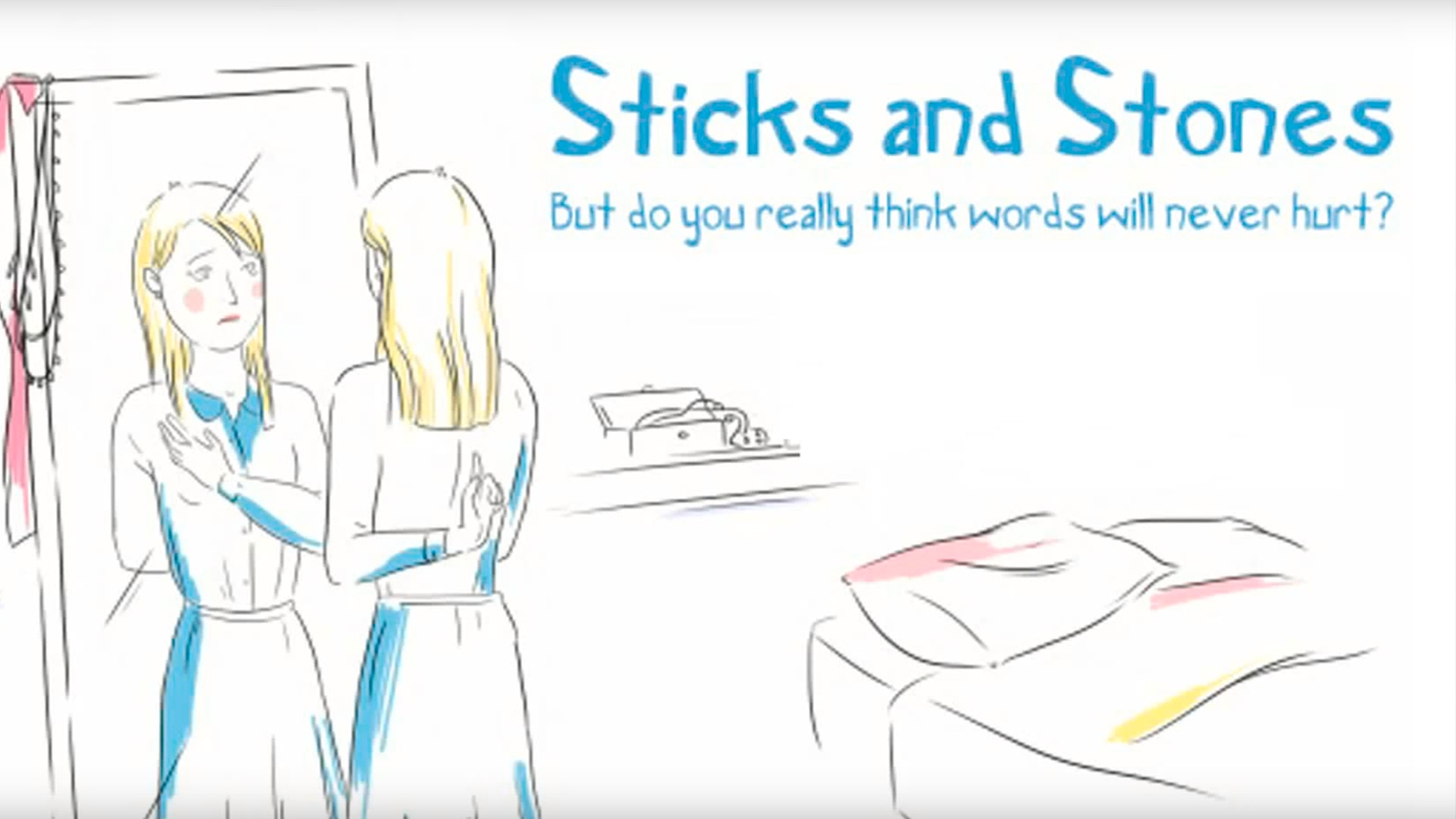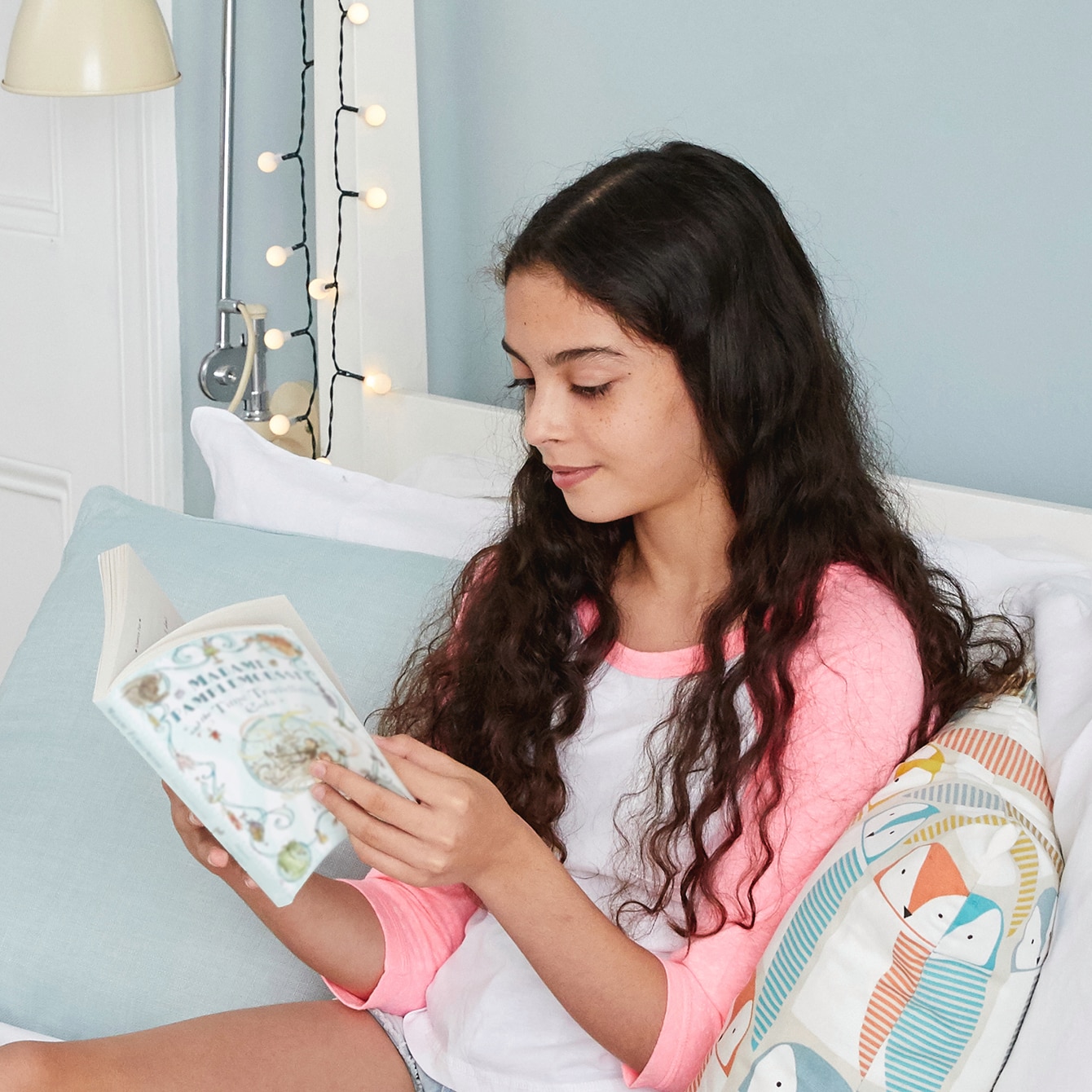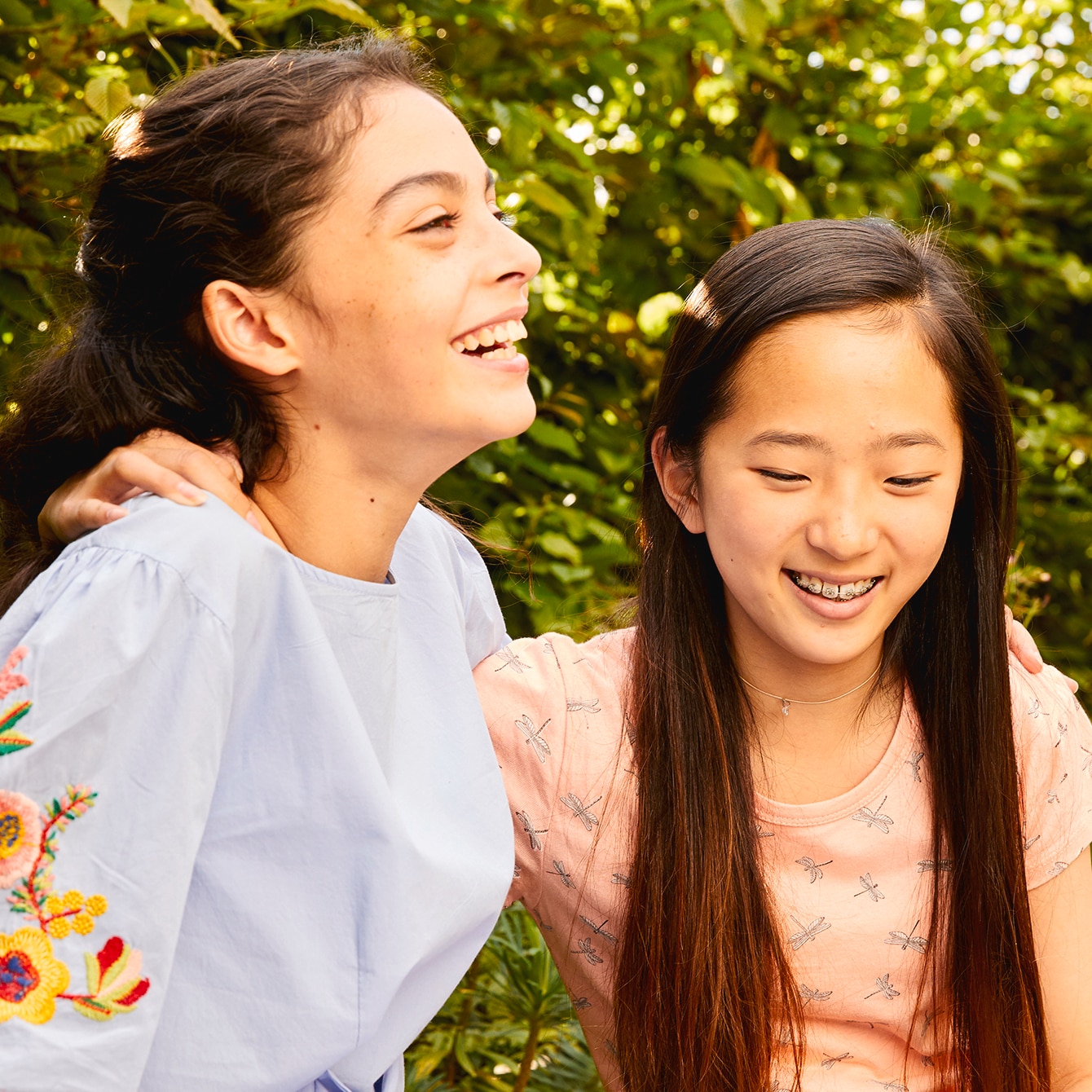Why is it that ‘the latest look’ is often nothing like people actually are in the real world? What look did you hanker after growing up? Trends may move on, but young people’s aspiration – and anxiety – is timeless.
If your child is chasing fashion and appearance trends, use our action checklist to show them that following fashion doesn’t have to mean changing who they are.
Nurture your child’s self-image
If your child is showing growing curiosity about style and appearance, nurture this experimentation rather than being afraid of it. The greater sense they have of their own style, the less they will look to outside influences.
Sonja, mum to 11-year-old Caitlin, agrees: “I think that giving kids the freedom to find their own style is essential. It’s one of the earliest forms of expression, creativity and personal choice they have.”
Share your own fashion mistakes
“When I think of some of my own haircuts and outfits over the years, I want to climb into a hole, but it’s all a part of growing up and finding out who you are,” laughs Sonja.
It’s normal – and harmless – for your child to experiment with looks and trends. Nurture their own sense of style and foster their creativity through self-expression. Remind them that the latest fashion for a certain body image will change and they needn’t be a slave to the current image of perfection.

Today’s trends, tomorrow’s cosmetic surgery problems
A shocking 47% of girls aged 11-21 believe the way they look holds them back, and two-thirds of those aged 17-plus think they are not pretty enough, according to Girlguiding UK's Girls' Attitudes Survey 2016 (PDF) (2.1MB)🔗. So it's perhaps unsurprising that so many girls consider drastically and permanently altering their appearance.
If your child seems drawn to the idea of cosmetic surgery, remind them that while trends for body features change, surgery is permanent. Discuss the possible health risks and dampen their curiosity by sharing photos of patients post-op, which may help them understand the pain and suffering involved.
To protect privacy we’ve changed the names of the people whose stories we tell on these pages. But the stories are genuine.






